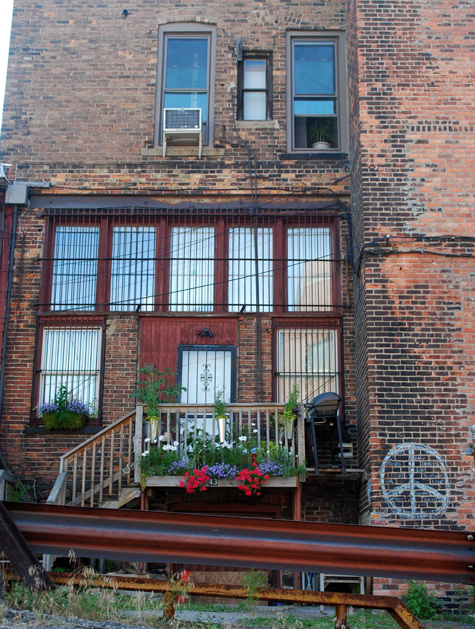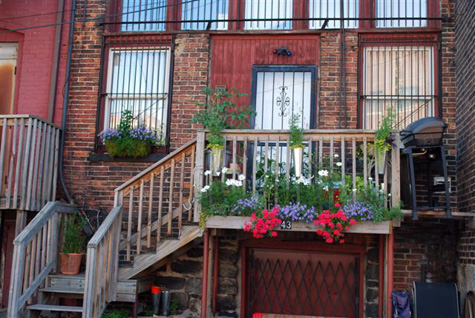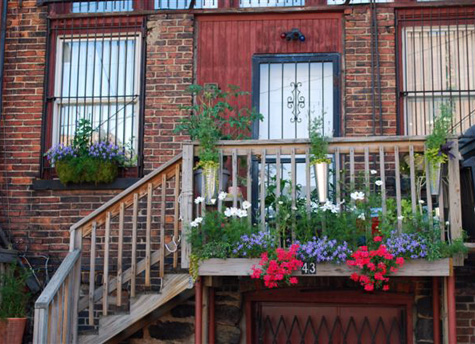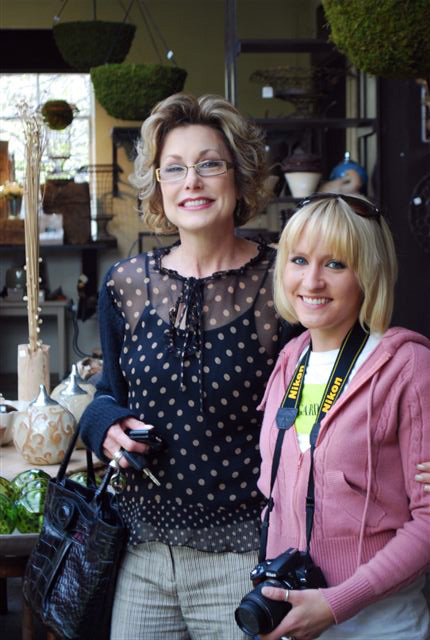At the risk of encouraging my good friend and client Janet to send me an email demanding to know when I will quit talking about her on this blog, I will talk about her again anyway. I cannot really remember how the subject came up, but many years ago we were talking about what she got from her Mom that has proved influential. Parents try to get plenty to stick in their kids minds and hearts-what actually works out is another story. “You never know when you will meet your intended”, her Mom said. Though Janet is sure this was in reference to her not wanting to get dressed up for a date she was definitely not looking forward to, this big idea very much describes how she gardens.
Janet has a five acre garden. That in and of itself tells you plenty about the level of Henry Mitchell-esque defiance of which she is capable and ready to put to use. She looks after that landscape every day, every year, as she believes that unexpectedly, the perfect garden moment might show up at the front door, and ring the bell. Or maybe a good gardening friend, or the Queen of England; no doubt she would treat either visit with equal care. She intends to be ready. But five acres of landscape also means the chances are excellent that on any given day, and in any given year, somewhere on that huge property, a garden disaster is either brewing or in full bloom. She may tell me she is going to dig up all her roses, and grass over the damn spot, but don’t believe her. I have never known her to give in, or give up. All of us at one time or another give out; there are times when I am just too tired or too disgusted, but this state of mind never lasts very long. Over the past 25 years I have seen Janet’s garden not ready for Janet-but I have never seen it not ready for her intended.
I sold my 5 acres fourteen years ago in order to finance the purchase of the building and property that houses my store. I moved to a city house, with a city-size piece of land. The unexpected benefit? My exposure to garden disaster is limited; I look after a tenth of what I used to. Some disasters may seem large, as there is no hiding them. One of my Princeton Gold maples is such a disaster I may have to dig it out. I may be thinking the “for pete’s sake” thoughts, but if I need to start over in that spot, I will. I have no reason to complain; this tree thing will get sorted out.
Meaning, I intend to be ready for my intended. Every day when I get home, my garden and landscape gets what it needs for an hour or two-maybe more. Buck is good natured about our conversation about the day that has to happen in tandem with the watering or the deadheading. As he came to me with an exposure to landscape that involved riding the lawn mower around 3 hours, twice a week, like it or not, I am impressed with this. Should I start to apologize for a particularly lengthy evening garden project, he likely will interrupt with “What if Janet rings up tomorrow that she would like to pop around for a look ?” When I am done laughing, I realize she definitely is on my intended A list-as is anyone really serious about gardens. I furthermore believe there are people on that list I have yet to meet , or I dream about meeting. So like she does, I do what I need to do, every day.
We are finally getting some warm weather. The Michigan dog days of summer can take their toll. The grass threatens to go brown, there is fungus brewing in the magnolias, and the zinnias, at the end of a scorching day the pots wilt like I have not watered them in a month, the perennial garden flags, the panic grass falls over. Such is the garden. Keeping up every day is my only defense against coming home to disasters that have multiplied such I would want to fall to the ground and weep. This I would no doubt recover from. But what if I was about to meet my intended?
Last night the light was so beautiful when I got home. Buck was already watering, thank God. I parked my car on the street, cleaned up the day’s garden debris, and got out my camera. Though I do not think my 2009 garden has peaked yet, maybe it has. Just in case, I took 189 pictures, of which I saved 50. In 10 days, I may take another set, and throw these 50 pictures away. Equally likely, in ten days a late summer storm with wind rain and hail could shred it all-and I will need those 50 pictures. So I have a set of pictures I can look at while I am picking up the pieces, or when I can’t stand one more minute of snow, ice and 19 degrees. Maybe a certain picture will show me in January that I need to make a change. I take pictures regularly; this helps shore up my garden spirit, given how ephemeral a garden can be, and how important the memories of it are to me. Lest this sound entirely too gloomy, I firmly believe the best is yet to come for my garden, for Janet’s garden-for everyone’s garden.
 It was Henry Mitchell who wrote that defiance is what makes gardeners; I believe him. Everyone who works for me gardens. It is interesting to see what they make, and how they use their voice. This loft right downtown in Pontiac is home to Lauren Hanson; she works in the store. It is one of many buildings in the area in various states of disrepair and dereliction. But it is obvious she has an idea about how to live and garden. Defiantly.
It was Henry Mitchell who wrote that defiance is what makes gardeners; I believe him. Everyone who works for me gardens. It is interesting to see what they make, and how they use their voice. This loft right downtown in Pontiac is home to Lauren Hanson; she works in the store. It is one of many buildings in the area in various states of disrepair and dereliction. But it is obvious she has an idea about how to live and garden. Defiantly. She is young, and has adventuresome ideas. She tells me she likes living in this loft, that it has so much more presence and attitude than a suite of rooms in an apartment building. This urban location doesn’t dismay her in the least; she is energized by it. A friend built her a windowbox for the floor of her mini-deck, and she planted flowers in very lively colors. The mossed baskets in the windows take some of the edge off the bars on the windows.
She is young, and has adventuresome ideas. She tells me she likes living in this loft, that it has so much more presence and attitude than a suite of rooms in an apartment building. This urban location doesn’t dismay her in the least; she is energized by it. A friend built her a windowbox for the floor of her mini-deck, and she planted flowers in very lively colors. The mossed baskets in the windows take some of the edge off the bars on the windows. When Lauren has a design idea, she figures out how to get there with materials she spots at house sales and thrift shops. The planted galvanized florist’s buckets hanging from the railing look sassy, and sensational. They are a great shape, and the silver sheen repeats the color and shine of blue sky reflecting off the windows glass. She tells me she will live here until she finds a house she can buy. In the meantime, she has made this loft a home , with a very good looking garden. All the plants are well grown, and kept up. She is of independent mind, and she has a great spirit; this is unusual people her age. She has her own ideas about what’s good, and what’s important. Even more impressive, she’s self effacing to a fault; my customers really like her. She has made it her business to learn about plants, and their care, so she can help people. She’s made an effort to become knowledgable about what we have-this you cannot hire.
When Lauren has a design idea, she figures out how to get there with materials she spots at house sales and thrift shops. The planted galvanized florist’s buckets hanging from the railing look sassy, and sensational. They are a great shape, and the silver sheen repeats the color and shine of blue sky reflecting off the windows glass. She tells me she will live here until she finds a house she can buy. In the meantime, she has made this loft a home , with a very good looking garden. All the plants are well grown, and kept up. She is of independent mind, and she has a great spirit; this is unusual people her age. She has her own ideas about what’s good, and what’s important. Even more impressive, she’s self effacing to a fault; my customers really like her. She has made it her business to learn about plants, and their care, so she can help people. She’s made an effort to become knowledgable about what we have-this you cannot hire. Number 43 is not only occupied, but it is occupied by an urban pioneer who gardens. She has big ideas, and good things ahead of her. This very petite blond woman hauls around forty pound bags of soil like its nothing. She looks after our plants and pots. She photographs everything we have, and maintains our website. She does the work of the posting for me. Like I said, she has a fire burning all of her own making; it will be interesting to see where she takes that.
Number 43 is not only occupied, but it is occupied by an urban pioneer who gardens. She has big ideas, and good things ahead of her. This very petite blond woman hauls around forty pound bags of soil like its nothing. She looks after our plants and pots. She photographs everything we have, and maintains our website. She does the work of the posting for me. Like I said, she has a fire burning all of her own making; it will be interesting to see where she takes that.